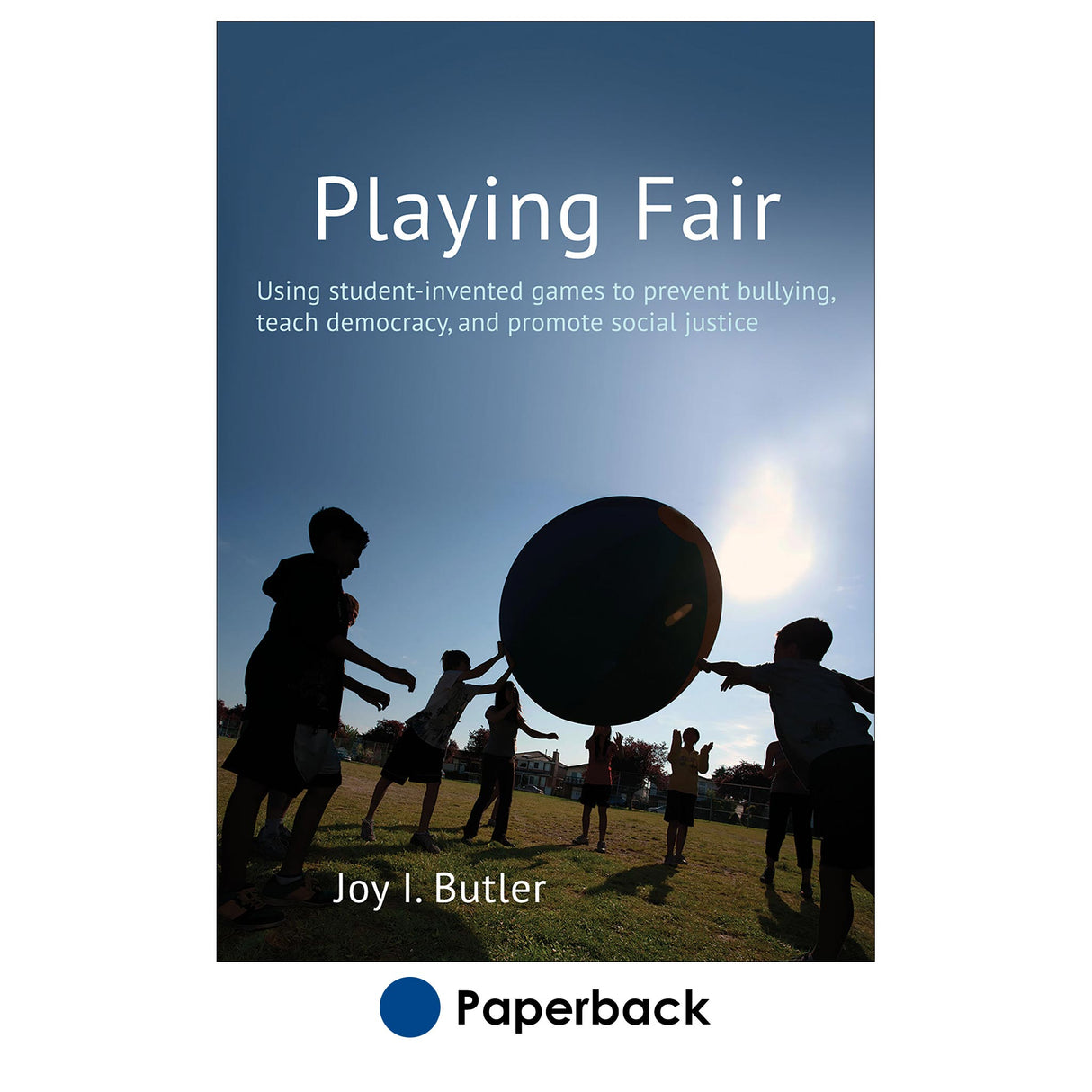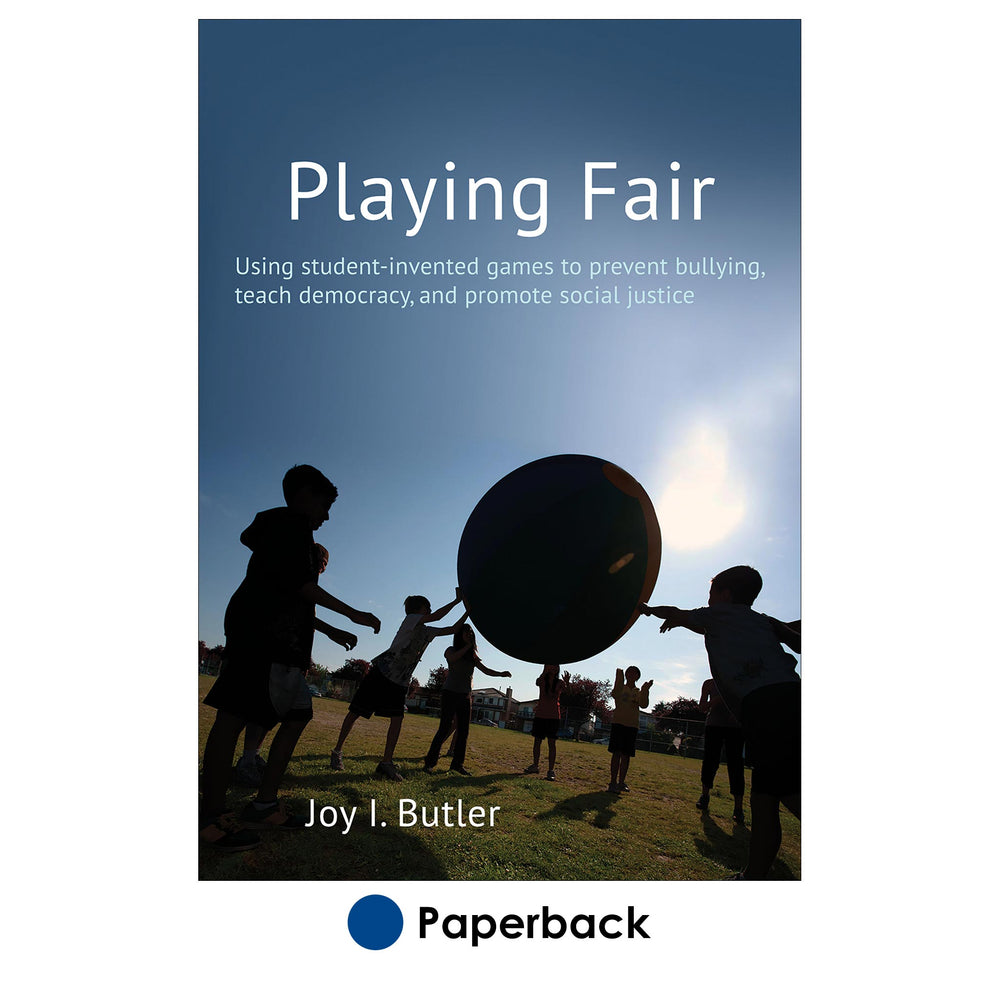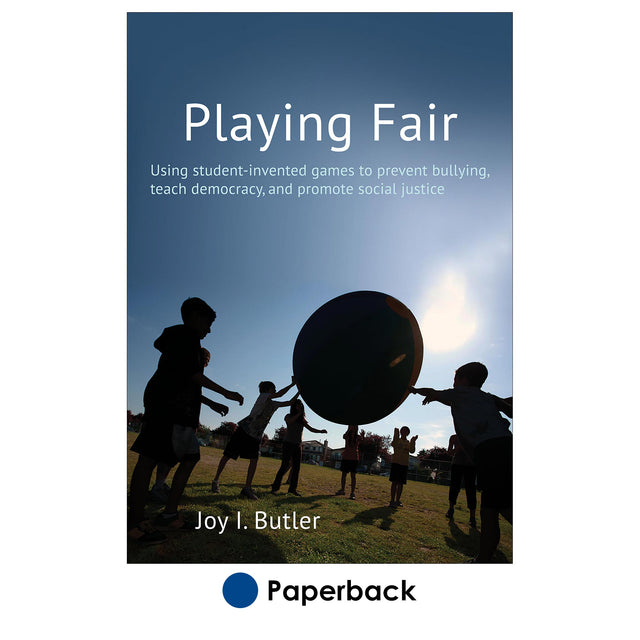Games, in the right environment and with the right guidance from teachers, offer students opportunities to grow as independent problem solvers, decision makers, and team players. In addition, students can learn a host of other skills, strategies, and concepts that can transfer not only to other games but also to other life situations.
Playing Fair shows teachers how to create the learning environments typical of the Teaching Games for Understanding (TGfU) approach. This text takes the TGfU approach to a new level, incorporating the development of group processes and democratic behaviors that promote personal growth as well as the ability to thrive in group situations.
Antisocial behavior and bullying are ongoing problems in schools today. The concepts and practical ideas for lessons offered in Playing Fair address those problems proactively as students learn about conflict resolution, inclusion, democratic decision making, leadership, and bullying. The topics in this book come together in developing the cognitive, psychomotor, and affective domains, all primary goals of the physical education curriculum.
A Peek Inside Playing Fair
Playing Fair offers teachers these benefits:
• Practical classroom stories showing teachers how they can apply theory and learning situations to their own students and school context
• Activities that include modifications so teachers can apply the games with students of all developmental levels
• Learning checks consisting of questions for teachers to ask their students in order to assess their learning
• Key Concepts, a special element that calls out important concepts for readers
The first part of the book covers the process of inventing games and the democratic principles involved, how social justice can be taught and learned through games, understanding the TGfU classification system, curriculum design, and pedagogical principles. The remaining 10 chapters show how to implement the concepts presented in the earlier chapters. Readers learn how to invent and play a variety of games: target games, striking games, net/wall games, and invasion games.
What Your Students Will Gain
Implementing the principles advocated in this book will help learners in these ways:
• Better understand and appreciate the constructs of game play through external and internalized schemas
• Transfer concepts, strategies, tactics, and skills within and among game categories
• Improve their performance and become more engaged in their own learning
• Become more self-effective and empowered as they understand and value the processes of decision making
• Understand how democracy works from the bottom up
• Grasp that democracy is tenuous, that it breaks down in the absence of active social justice, and that we all have a role and responsibility in constructing and reconstructing it, moment by moment
Playing Fairwill help students gain a better understanding of themselves and others, and it will make them sensitive to issues such as social justice, collaboration, negotiation, inclusiveness, and fairneess. Students will learn to make informed decisions in the context of their invented games and to make intentional, reasoned inquiries about game situations, which they can then transfer to other areas of their lives.
Bringing Systemic Change and Facilitating Personal Growth
This book will help teachers and coaches teach the principles of game play and those of democracy and citizenship in concrete ways. They will contribute to systemic change in the school culture—a culture in which students learn to create their own games and gamelike situations wherein concepts, skills, and strategies can be learned in context through a process called democracy in action.
The bottom line is simple. Playing Fair brings out inherent qualities that have been part of games since the beginning of humankind: play, fun, challenge, inventiveness, teamwork, friendship, and quick thinking. Along the way, games offer opportunities for moral and spiritual development—and the games in Playing Fair offer all that and more.
Audience
Resource for in-service physical education teachers. Reference for pre-service teachers and graduate students.
Chapter 1 Play, Inventing Games, Democracy in Action, and Worldview
Reintegration of Play in Games
Process of Inventing Games
Democracy in Action (DiA)
Worldview of an Inventing Games Teacher: Ecological Complexity Thinking
Summary
Chapter 2 Teaching and Learning Social Justice Through Inventing Games
Revisiting the True Meaning of Competition
Teaching Social Justice and Democracy in Action
Summary
Chapter 3 Scaffolds for Learning: Schema, Transfer, Classifications, and Rules
TGfU Classification and Inventing Games
Understanding Game Constructs Through Inventing Rules
Structuring the Inventing Games Curriculum
Teaching for Transfer
Curriculum Organization
Summary
Chapter 4 Developmental Learning and Curriculum Design
Psychomotor Domain (Moving)
Cognitive Domain (Thinking)
Affective Domain (Feeling)
Conclusions
Summary
Chapter 5 Pedagogical Principles
Joy Butler and Linda L. Griffin
Teaching as Facilitating
Tactical Complexity
Modifications Through Representation, Exaggeration, and Adaptation
Assessment of Learning Outcomes
Summary
Chapter 6 Inventing Unopposed Target Games
Stage 1: Setting the Learning Environment and Setting Conditions for Democracy in Action by Developing a Decision-Making Agreement
Stage 2: Developing Target Game Constructs by Observing a Partner
Stage 3: Inventing and Playing a New Target Game
Stage 4: Refining the Invented Game
Stage 5: Refining the Skills Required in the Invented Game
Stage 6: Challenging Everyone by Adapting Rules
Stage 7: Showcasing the Game
Summary
Chapter 7 Innovative Approaches to Opposed Target Games
James Mandigo
Lesson 1: Accuracy to Target
Lesson 2: Avoiding Obstacles
Lesson 3: Using Obstacles to Get Closer to a Target
Lesson 4: Preventing Scoring (Offense)
Lesson 5: Preventing Scoring (Offense)
Lesson 6: Preventing Scoring (Defense)
Summary
Chapter 8 Inventing Striking Games: Danish Longball
How to Play DLB: Regulations and Rules
Guide for Teaching Stages
Stage 1: Setting the Learning Environment for Democracy in Action and Fair Game Play
Stage 2: Changeover Rule (Transitions)
Stage 3: Refining Rules and Establishing the Role of the Referee
Stage 4: Strategic Offense Concept 1 and Coach and Observer Roles
Stage 5: Strategic Offense Concept 2
Stage 6: Strategic Defense Concept 1
Stage 7: Strategic Defense Concept 2
Stage 8: Showcasing All Games and Standardizing One Through the Democratic Process
Stage 9: Playful DLB Competition Tournament
Summary
Chapter 9 Striking Game: Cricket
Kevin Sandher
Unit Plan Structure
Assessment
Lesson 1: Learning Basic Rules
Lesson 2: Offense Concept: Hitting to Open Space
Lesson 3: Defense Concept: Reducing Batter Time Using Throwing
Lesson 4: Running Between Wickets and Catching to Get Batters Out
Lesson 5: Combination Skills
Lesson 6: Defense Concept—Bowling to Limit the Batter’s Time
Lesson 7: Using the GPAI for Assessment
Lesson 8: Pairs Cricket Tournament
Summary
Chapter 10 Inventing Net and Wall Games
Joy Butler and Tim Hopper
Framework (Strategic Concepts and Tactical Decisions)
Stages of Invention and Democracy in Action
Stage 1: Setting the Learning Environment for (A) Democracy in Action and (B) Game Constructs—Defining Net and Wall Games
Stage 2: Spatial Awareness in Net Games—Castle Game
Stage 3: Spatial Awareness in Wall Games
Stage 4: Creating Net and Wall Games Through the Democratic Process
Stage 5: Challenging Everyone Through Adaptation
Stage 6: Refining Games and Establishing the Role of the Coach
Stage 7: Showcasing Games and Revising
Stage 8: Competitive Game
Summary
Chapter 11 Net and Wall Games: Pickleball
Tim Hopper
Game Understanding
Tactical Framework for Strategic Principles
Lessons and Learning Experiences
Court Areas and Learning to Play Pickleball
Area 1: Short-Court Games
Area 2: Long-Court Games
Area 3: Volley-Court Games
Doubles Dink Tennis
Three for a Win
Summary
Chapter 12 Inventing Invasion Games
Stage 1A: Setting the Learning Environment for Invasion Game Constructs and Democracy in Action
Stage 1B: Defining Invasion Game Constructs
Stage 2: Establishing the Game Through the Democratic Process
Stage 3: Playing the Game
Stage 4: Refining the Game
Stage 5: Identifying the Coach
Stage 6: Identifying the Referee
Stage 7: Showcasing Games
Stage 8: Defense
Stage 9: Offense
Stage 10: Transferring Concepts From Inventing Games to Institutionalized Games
Summary
Chapter 13 Invasion Game: Soccer
Steve Mitchell
Lesson 1: Primary and Secondary Rules
Lesson 2: Keeping Possession
Lesson 3: Distribution of Possession
Lesson 4: Penetration and Scoring
Lesson 5: Preventing Scoring
Lesson 6: Denying Space
Lesson 7: Obtaining Possession
Lesson 8: Regaining Possession
Summary
Chapter 14 Invasion Game: Touch Football
Bobby Gibson
Pedagogy
Democracy in Action
Unit Plan Structure
Lesson 1: Ultimate Football
Lesson 2: Flickerball
Lesson 3: Flickerball Extended
Lesson 4: Offensive and Defensive Team Concepts
Lesson 5: Gamelike Situations
Lesson 6: Kicking
Lesson 7: Team Formation and Playbook Design
Lesson 8: Game Play and Game Management
Summary
Chapter 15 Final Thoughts





